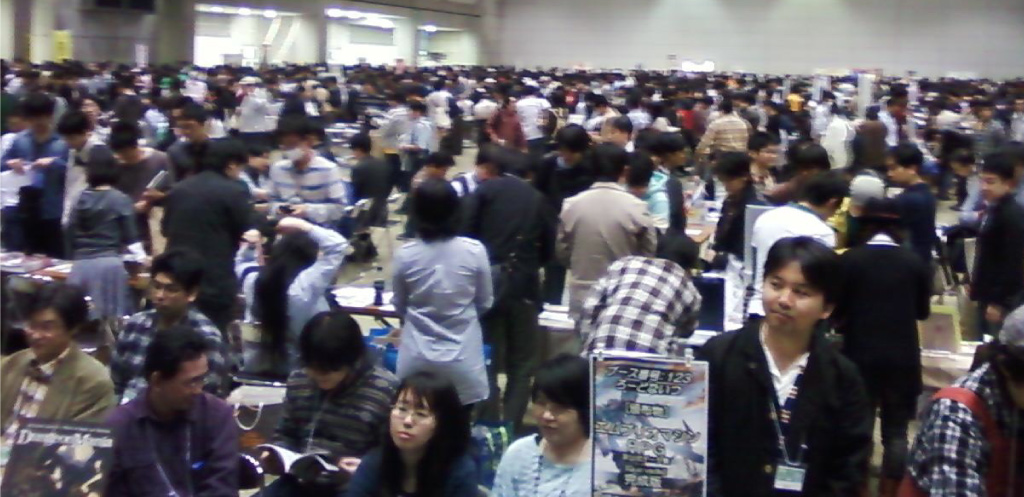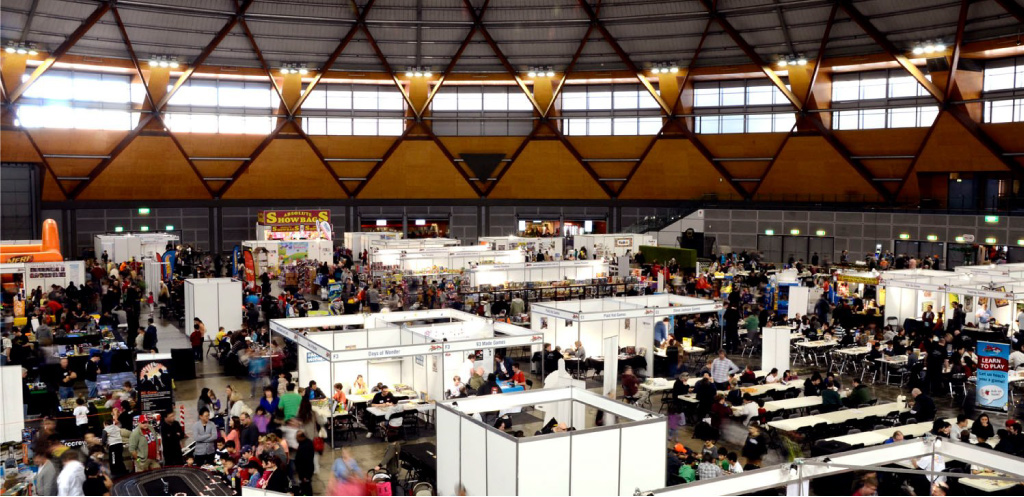Last industry post, I talked a little about my experiences at TAGE but there was one thing I didn’t mention, mainly because it was part of an elaborate self-delusion. In the lead up to the expo, the organisers announced the attendance of publishers Indie Boards and Cards and Stronghold Games. Both respected and awesome game companies, and this got me more than a little excited. Number one, I really wanted the Lancelot promo for Resistance: Avalon, and number two, publishers were actually coming to Australia! Heck, maybe they’ve heard of a lost tribe of game designers and ventured to the Great South Land in search of the next Francis Drake or Sushi Go. This was not the case. As the show got closer and closer, more and more publishers were announced, and I started to sense something was wrong. I was short a few prototype pieces for Ragnarol and contacted Mayday, another announced publisher, about getting some of their very nice wooden resources for Euro games. They got back to me, and said they would have no representative at the fair. It finally dawned on me, I was living a lie.
But, we’ll get back to that later. I was in Japan and then Taiwan recently on holidays. Now, holidays doesn’t mean time off from designing, developing or constantly think about games, just time off going to my day job. Thanks to the power of the internet, I was able to find a meeting of Japan’s International Gamers Guild while I was in Tokyo. JIGG is a group of mostly ex-pats who play games in Japan but generally in English (which is good for me). At the JIGG meetup there were the usual games on offer, we played the kind-of-Japanese-but-not-actually Hanabi and Stonemaier Games’ Viticulture, but there was also some more distinctly Japanese games.
As Western gamers were probably most familiar with Japanese design through Love Letter rethemed into the Renaissance by AEG. Love Letter is a stand-out from the Japanese design scene but also pretty typical of the scene in general. Another game that is popular in Japan and globally is One Night Werewolf (if you recall there are 2 designers’ names on the box, Suburbia’s Ted Alspach and Akisha Okui). These games have a few things in common, that I’ve come to think of as hallmarks of Japanese design, namely bluffing, hidden roles and the likelihood for emergent hilarity.

From left: Love Letter for white people (image from Vendetta Gaming), the Japanese art version (image from Little Metal Dog Show) from AEG, which is actually double the size of the actual Japanese version which does not include wooden cubes
After Viticulture, I played Chronicle, a trick-taking game by the designer of Love Letter, Seiji Kanaii. This was definitely a well-designed game, but failed to grab me, like all trick-taking games before it (I suppose I’m either too straight-forward or too tricky to be taken). After that, we played Alley Thieves, designed by Australian-expat Mandy Tong (aka MissMerc007), who kindly taught us the game and cheered us as we tried to become the best thieve’s guild in the land. This was perhaps a little less typically Japanese (more dice rolling that card play) but was a delightfully tense experience of dice rolling and area control. Mandy also introduced us to Kaiju, which quickly turned into one of those experiences that is hard to create outside of tabletop games and illicit drugs. Within a few minutes of sitting down at a table with complete strangers, we were yelling at them and laughing together. Kaiju’s a neat little dice game that is distinctly Japanese in appearance (the box is literally a cute little Godzilla) and features the hallmark of emergent hilarity, but replaces bluffing and hidden roles with dexterity and dice-rolling. It’s also not at all Japanese.
And jump cut to me sitting at a table in a Taiwanese community centre stacking cardboard cats with the designer of Kaiju, Aza Chen. Aza is on his second print run of Cat Tower and has sold almost 2,000 units without Kickstarter and without a global publisher or distributor. He sells them locally online and through the Tokyo Game Market. I saw his games on shelves in both Japan and Hong Kong, but when I asked him where I could find it in Taiwan, his answer was singular, himself.
Taiwan, in case, you’re not aware of it, is a little island off the coast of mainland China. It’s got approximately the same population as Australia, but stuffed into an island smaller than Tasmania. Taiwan is perhaps best known for robust political discussion and street food, and being stuck between a rock and a hard place. It’s where the democratic Chinese escaped to when the Communists came to power, and it was also occupied for half a century by the Japanese. Taiwan is still distinctly culturally Chinese but with more friendly global relations with America, Japan and pretty much anyone that likes tropical fruit and cutting edge electronics.
I was sitting at the table with Aza as part of a playtest even held by Taiwan Boardgame Design. The event started at 1pm and went to around 9pm. It was a full day of playtesting, broken up with a lecture and mini-game from a local manufacturer and a trip report from the latest Tokyo Game Market. Tokyo Game Market is tri-annual game convention that’s starting to get some international attention, especially since the massive international success of Love Letter, and it’s where designers from a little island country with a population of only 23 million have found a market for their games (it’s also where Mandy got her copy of Kaiju).
Another fully realised Taiwanese design on the table was Castle Crush. I got the pleasure of playing both the base game and the in-development expansion, coincidently only a few days after deciding it was too heavy to fit in my suitcase in Tokyo. Like Kaiju and Cat Tower, Castle Crush has a strong physical presence. A succinct summary of the game is: you and your friends each build a castle, you then try to destroy your friends’ castles. Of course, there’s points involved but it’s the type of game that’s immediately engaging for both children and adults (and that I deeply regret not finding room for in my suitcase). I asked the designer the same question, where could I buy the game in Taiwan? And the answer was the same, from himself.
Now, let’s back to the Toy and Game Expo and my self delusion. Of course, no major American or European publishers were coming to Sydney. The Toy and Game Expo had merely arranged for copies of game and volunteers to run demos of said games. There were no promos, no special deals (the demo booths weren’t selling a thing) and no chance of a publication deal. This wasn’t terribly surprising, but a little disappointing. We live in an island continent far away from both Germany and America, and it was unrealistic of me to expect publishers to make the trip. (Quick inclusion note, Treefrog Games was there, as were a few small Australian publishers like 93 made games, selling and demoing their own games)
Now, jump cut, again back to Japan (sorry, if you’re getting dizzy, we’re almost done). In fact, this jump cut travels even further back in time, to the Tokyo Games Market of June 2014. I don’t really know what it looks like, because I wasn’t actually there, but I imagine it’s pretty crowded, with mostly Japanese and a few Taiwanese faces. However, you will be able to pick a few Western face in the imaginary crowd (imaginary to me, but this is a real event). You might even recognise Michael Mindes, from TMG games, by his Kickstarter videos, and that other person talking to a young designer is a representative from Queen Games.

From Simon Lundstrom’s BGG report
Tokyo is not Sydney, and Japan is not Australia. Tokyo’s not as far away from Europe or America as we are, and it’s at the centre of a culture that is becoming increasingly known for it’s quick, fun and funny game design. Unfortunately, I can’t tell you who shook hands with whom at the Games Market, but I am told we’re going to be seeing some Taiwanese games on American, and hopefully Australian, shelves soon.
Now, final jump cut. We’re at the Protospiel at the Toy and Game Expo. Phil Walker-Harding, designer of Sushi Go, is giving some aspiring game designers tips about getting games actually published. He reveals that at one point he invested in a ticket to Germany to attend the Essen game fair (the biggest board game event in Europe, if not the world). He didn’t sign any immediate contracts but he met up with some publishers and made some connections which eventually resulted in some publishing deals down the road. I’m not going to do another jump cut, because I think you’re looking a little green, but I will tell you that Phil’s name was brought up by more than one gamer / designer during my travels. In fact, if I mentioned game design and Australia, his name was sure to follow (and not from me). That’s right, designers and gentleman, Phil is big in Japan.
(Okay, just to state the obvious, Australia is an English speaking country consuming board games primarily from America and Germany, but we’re also part of the Asia Pacific region and a plane ticket to Tokyo is about half the price of a ticket to Essen and takes half the time. They like card games with bluffing. GO!)
PS, I’ll go into another solution next week, I’m currently exploring it right now, on Kickstarter.
7 thoughts on The Asia-Pacific Solution
Comments are closed.


Completely off-topic, but here are some (possibly interesting) facts about Taiwan v.s. Australia:
Taiwan is just over half the size of Tasmania: http://www.wolframalpha.com/input/?i=area+taiwan%2Ftasmania
Taiwan is 47 times over the population in Tasmania: http://www.wolframalpha.com/input/?i=population+taiwan%2Ftasmania, and as mentioned, Taiwan’s population is equal to Australia.
There are more people with the surname, “Chang” than there are the entire population of Australia four times over and is possibly the most common surname in the world (unverified due to lack of quality record keeping).
Thanks, Allen. Also, as previously discussed between us, the food is fantastic in Taiwan but the beer is like sex in a canoe. Their board game scene is also off the hook with heaps of stores and cafes.
So how do we know you’re the REAL Allen Chang? 😉
He’s got the Rule and Make avatar!
Fun post Jason. And full of interesting ideas. So, anyone know of any capable japanese gamer translates? I know they like their monsters over there!
Is there Japanese crowd funding too?
There’s Campfire (http://camp-fire.jp/), but I don’t know if it’s had the same effect in Japan as elsewhere. As I mentioned, a lot of the small publishers in both Japan and Taiwan are doing things the old fashioned way. Using local printers and doing small print runs and selling them direct at Game Market. Japan’s International Gamer Guild might be good place to look for translators (they have differing levels of fluency).
I didn’t really get heavily into this in the article, but one of the strange and fantastic things about Japan is that they still primarily produce and consumer their own culture (rather than American exports), so a game that appeals to Japanese sensibilities (Sushi Go) is most likely to flourish in the Japanese market, but there is still an import market for traditional Western style games as well.